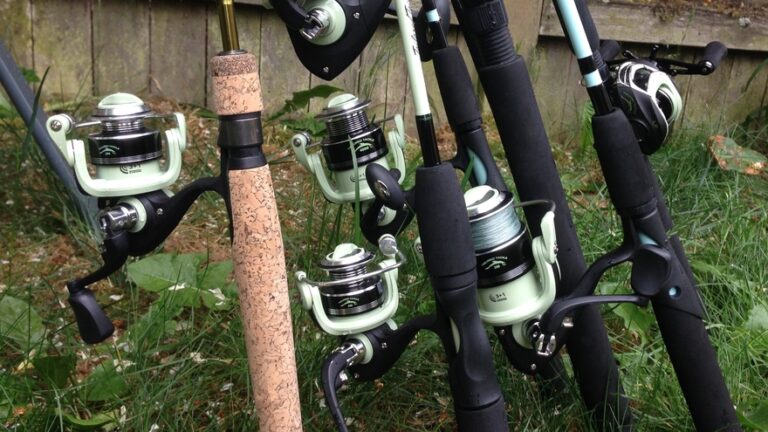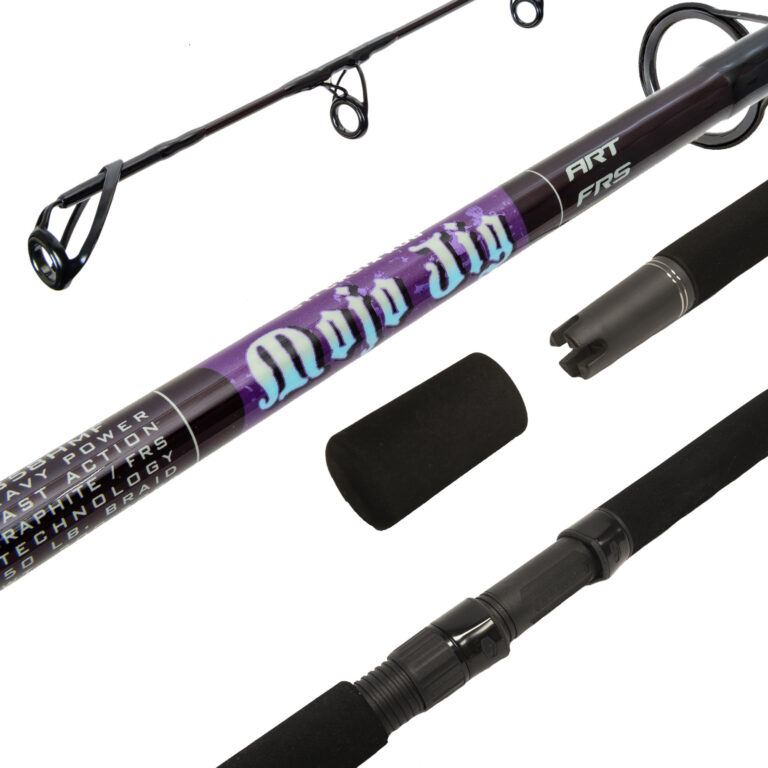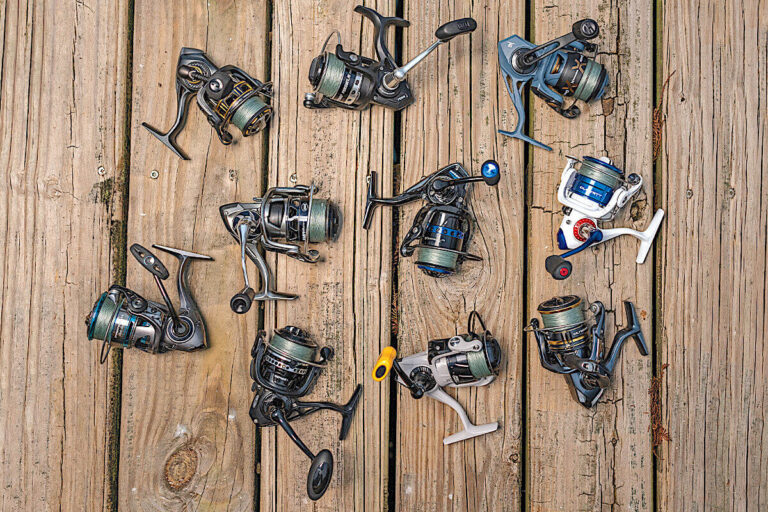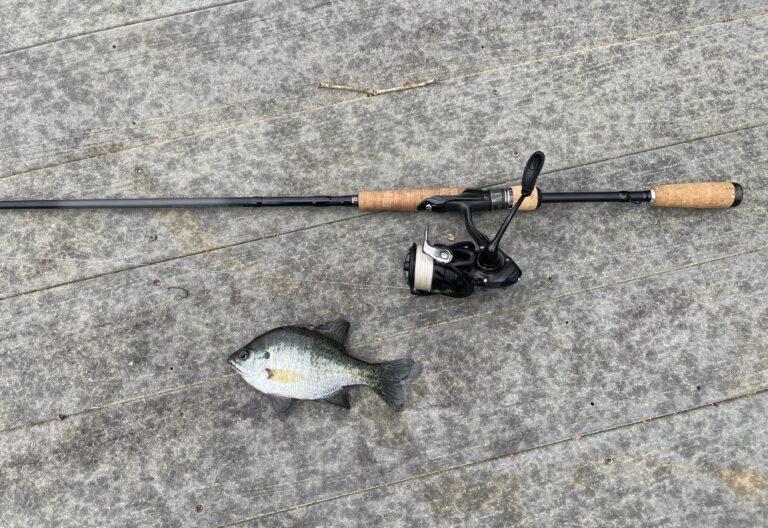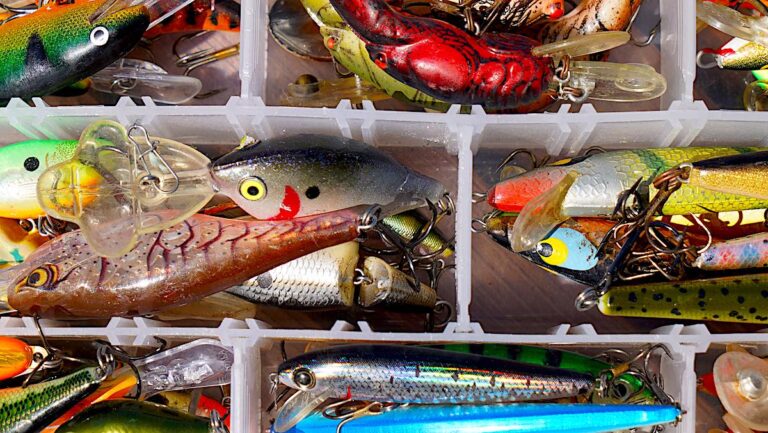The best spinning rod materials are graphite and fiberglass, both offering strength and flexibility. Graphite is lightweight and sensitive, while fiberglass is durable and powerful.
These materials enhance the performance and casting accuracy of spinning rods, making them ideal for anglers of all skill levels. Whether you prefer a rod with more sensitivity for finesse techniques or one with more power for casting larger baits, choosing the right material is crucial.
Additionally, the combination of graphite and fiberglass in some rods provides a balance between sensitivity and strength, offering the best of both worlds. Ultimately, selecting the right spinning rod material will depend on your fishing style and the species you’re targeting, so consider your preferences and fishing conditions when making a choice.
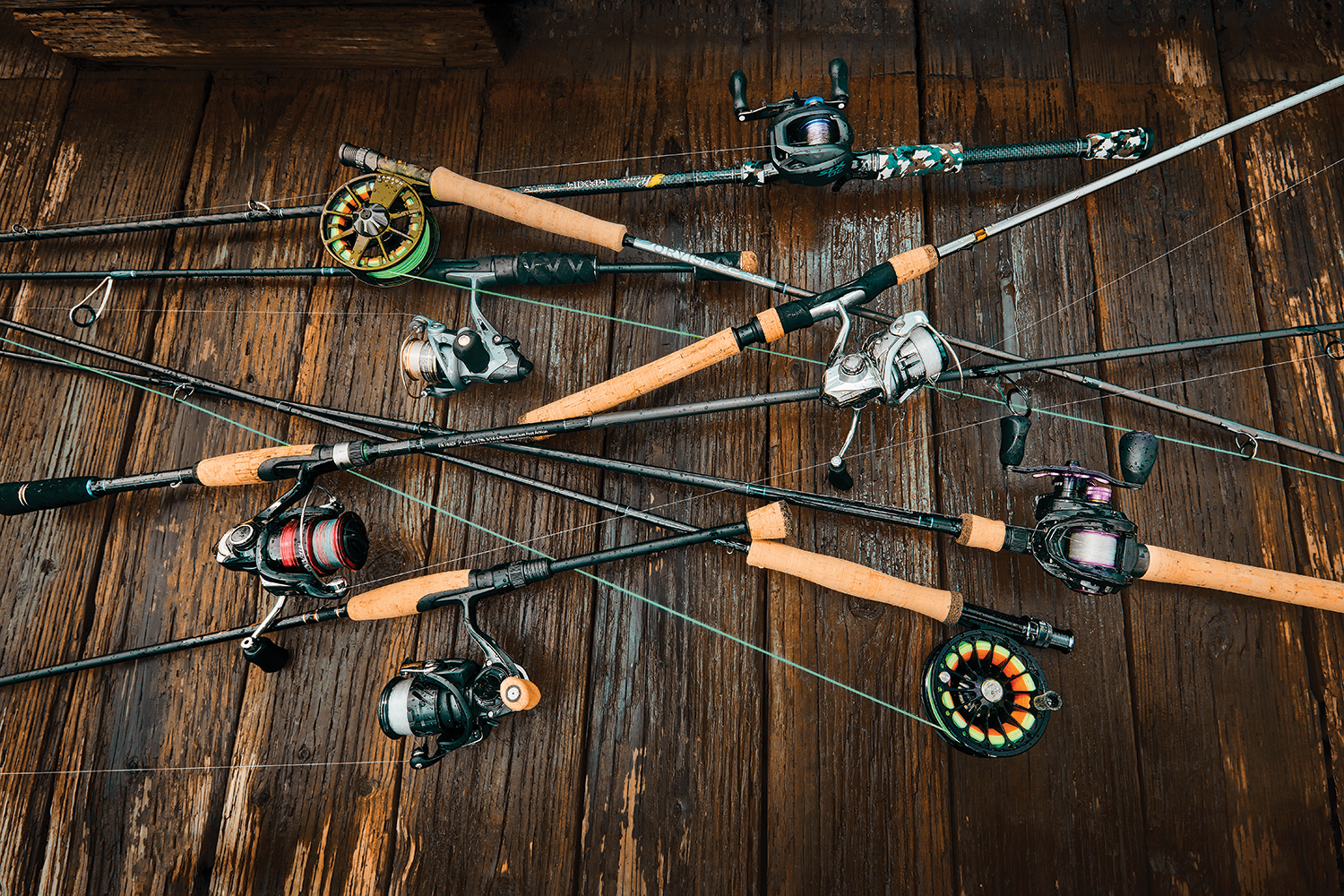
Credit: www.outdoorlife.com
Why Choosing The Right Material Is Crucial For Spinning Rods
The Role Of Material In Determining The Performance Of Spinning Rods
Spinning rods are essential tools for anglers, and choosing the right material can greatly impact their performance. The material used in spinning rod construction plays a crucial role in various aspects, including sensitivity, strength, and overall durability. Understanding the different rod materials available and their unique properties can help you make an informed decision and enhance your fishing experience.
Key Factors To Consider When Selecting Spinning Rod Materials
When selecting the material for your spinning rod, there are several important factors to consider. Here are the key points to keep in mind:
- Weight: The weight of the spinning rod material can affect your comfort and casting distance. Lighter materials like graphite and carbon fiber provide better sensitivity and ease of use, thereby reducing fatigue during long fishing sessions.
- Sensitivity: The sensitivity of the rod material determines how well you can detect bites and movements underwater. Materials like graphite excel in this aspect, offering excellent sensitivity that allows you to feel even the slightest nibble.
- Strength: The strength of the material is vital, especially when battling with larger fish species. Fiberglass is known for its exceptional strength and durability, making it an excellent choice for heavy-duty fishing.
- Action: The material of the spinning rod influences its action, which refers to the rod’s flexibility and bending capabilities. Graphite and carbon fiber rods usually have a fast or medium-fast action, providing a more sensitive and responsive feel.
- Durability: The durability of the spinning rod material is crucial, considering the potential wear and tear it may experience during fishing trips. Graphite and carbon fiber rods are generally known for their durability, with higher levels of resistance against impact and abrasion.
- Price: Lastly, it’s essential to consider your budget when selecting spinning rod materials. Different materials come with varying price ranges, so it’s important to strike a balance between your fishing needs and your budget constraints.
By taking into account these key factors, you can make an informed decision when selecting the best material for your spinning rod. Whether you prioritize sensitivity, strength, or a combination of both, understanding the properties of different materials can help you choose the ideal spinning rod that suits your fishing style and preferences.
Carbon Fiber: The King Of Spinning Rod Materials
The Exceptional Strength And Sensitivity Of Carbon Fiber
Carbon fiber has become the king of spinning rod materials due to its exceptional strength and sensitivity. Here are the key points to note about this remarkable material:
- Carbon fiber is a composite material made up of thin strands of carbon atoms.
- These carbon strands are woven together to form a strong and lightweight material.
- The unique structure of carbon fiber gives it incredible strength-to-weight ratio, making it ideal for fishing rods.
- Unlike traditional materials like fiberglass, carbon fiber has superior sensitivity, allowing anglers to feel even the slightest nibble.
- The increased sensitivity also enables better control and accuracy during casting and fighting fish.
- Carbon fiber spinning rods are designed to be highly responsive, allowing anglers to detect subtle movements underwater and react accordingly.
Advantages Of Carbon Fiber Rods Over Other Materials
Carbon fiber rods have several advantages over other materials commonly used for spinning rods. Here are the main benefits to consider:
- Weight: Carbon fiber is significantly lighter than other materials, reducing fatigue during long fishing sessions and making it easier to cast.
- Strength: Carbon fiber is incredibly strong, allowing for powerful hook sets and providing the necessary backbone to handle large fish.
- Sensitivity: As mentioned earlier, carbon fiber offers exceptional sensitivity, enabling anglers to discern even the slightest movements.
- Flexibility: Carbon fiber rods have excellent flexibility, allowing for better control and a smoother fighting experience with hooked fish.
- Durability: Carbon fiber is highly durable, resistant to rust, corrosion, and the effects of sun exposure, ensuring that your rod will last for years.
Different Types Of Carbon Fiber Used In Spinning Rods
Not all carbon fiber is created equal. Manufacturers use different types of carbon fiber in spinning rods to achieve specific performance characteristics. Here are the common types you may come across:
- Standard-modulus carbon fiber: This type of carbon fiber is used in entry-level spinning rods. It offers good strength and sensitivity while keeping the price affordable.
- Intermediate-modulus carbon fiber: A step up from standard-modulus, intermediate-modulus carbon fiber provides improved strength and responsiveness, making it suitable for intermediate anglers.
- High-modulus carbon fiber: High-modulus carbon fiber is the top-of-the-line material used in premium spinning rods. It offers the highest level of strength, sensitivity, and responsiveness, making it a favorite among professional anglers.
- Nano carbon fiber: Some manufacturers incorporate nano-sized carbon particles into their spinning rods. This innovative addition enhances overall strength and reduces weight even further, leading to enhanced performance.
Tips For Maintaining And Caring For Carbon Fiber Rods
To ensure your carbon fiber rod performs optimally and lasts a long time, follow these tips for maintenance and care:
- Clean your rod after each fishing trip by rinsing it with freshwater to remove any salt, dirt, or debris.
- Store your rod in a protective case or rod sock to prevent scratches, dings, and other damage.
- Avoid bending the rod beyond its recommended limit to prevent structural damage.
- Check the guides regularly for damage or wear, as any defects can negatively affect your casting and line performance.
- Apply a small amount of rod wax or polish to keep the rod’s finish looking pristine and protect it against uv damage.
- Avoid exposing your rod to extreme temperatures or prolonged sunlight, as this can weaken the carbon fibers over time.
- Always transport your rod in a secure rod tube or holder to prevent accidental breakage.
- If your rod does suffer any damage, consult a professional rod builder or repair service to assess and fix the issue properly.
By following these maintenance tips, you can prolong the life of your carbon fiber spinning rod and continue to enjoy its exceptional performance. Now go out there and make the most of your fishing adventures!
Fiberglass: A Time-Tested Material For Spinning Rods
The Durability And Flexibility Of Fiberglass Rods
Fiberglass has been a staple material for spinning rods for many years, thanks to its unmatched durability and flexibility. Here’s why fiberglass is a time-tested material that continues to impress anglers:
- Durability: Fiberglass rods are renowned for their exceptional durability. They can withstand the rigors of constant use, making them ideal for anglers who fish regularly or in challenging conditions. Whether you’re battling against strong currents or casting in rocky areas, a fiberglass spinning rod will hold up and withstand the test of time.
- Flexibility: One of the standout features of fiberglass rods is their flexibility. This characteristic allows the rod to bend and absorb the shock of a fish’s sudden movements, reducing the risk of line breakage. The inherent flexibility of fiberglass makes it an excellent choice for beginners and novice anglers who may struggle with proper casting techniques.
- Shock absorption: Fiberglass rods have a unique ability to absorb shocks and vibrations that occur during the fight with a fish. This property enables anglers to exert more pressure on the fish without the fear of the rod breaking. The shock-absorbing quality of fiberglass rods also reduces the likelihood of lost fish due to line breakage.
Benefits Of Fiberglass For Specific Fishing Techniques
Fiberglass spinning rods offer several benefits for specific fishing techniques, making them a popular choice among anglers who specialize in these methods. Here are some advantages of using fiberglass rods for specific fishing techniques:
- Crankbait fishing: Fiberglass’s inherent flexibility is particularly advantageous for crankbait fishing. The slow action and forgiving nature of fiberglass rods allow for better control and accurate presentations, resulting in more successful hooksets.
- Topwater fishing: Fiberglass rods excel in topwater fishing techniques, where a quick and precise hookset is crucial. Their flexibility and forgiving nature enable anglers to generate the right amount of rod tip action to impart lifelike movements to the lure while maintaining control during the retrieve.
- Live bait fishing: When using live bait, a fiberglass spinning rod provides the perfect balance of strength and sensitivity. The flexibility of the rod ensures that fish won’t feel excessive resistance, allowing them to take the bait more confidently, resulting in a higher hookup rate.
Drawbacks And Limitations Of Fiberglass Spinning Rods
While fiberglass spinning rods offer many advantages, they also come with a few drawbacks and limitations that anglers should consider before making a purchase. Here are some factors to keep in mind:
- Weight: Fiberglass rods tend to be heavier compared to alternative materials like graphite. This extra weight can result in fatigue during long fishing sessions or when casting repeatedly. Anglers who prioritize lightweight gear may find fiberglass rods less desirable.
- Sensitivity: Although fiberglass rods have their own level of sensitivity, they are generally less sensitive than graphite rods. Anglers who rely heavily on detecting subtle bites or bottom structure may find that the reduced sensitivity of fiberglass rods affects their fishing experience.
- Action: Fiberglass rods typically have a slower action compared to graphite rods. While the slow action can be advantageous for specific fishing techniques, it may not be suitable for anglers looking for a faster, more responsive rod.
How To Enhance The Performance Of Fiberglass Rods Through Modifications
While fiberglass rods are excellent as they come, you can further enhance their performance by making a few modifications. Consider these tips to optimize your fiberglass spinning rod:
- Guide upgrades: Upgrading the rod’s guides to high-quality, low-friction options can improve casting distance and reduce line wear. Consider replacing the stock guides with lightweight and durable materials like titanium or ceramic.
- Reel seat replacement: Switching to a premium reel seat can provide better grip and increased sensitivity. Look for reel seats that utilize advanced materials like carbon fiber or ergonomic designs for improved comfort and control.
- Adding weight: If you prefer a faster action, you can experiment with adding weight to the rod’s tip. This modification can increase the overall sensitivity and responsiveness of the rod, providing a more enjoyable fishing experience.
- Custom grip: Consider customizing the rod grip to ensure a comfortable and secure hold. You can wrap the handle with premium cork, eva foam, or other materials that suit your personal preference.
Remember, these modifications may void any manufacturer warranties, so proceed with caution and consult with a professional rod builder if you are unsure.
Fiberglass spinning rods have stood the test of time, offering unmatched durability and flexibility to anglers of all skill levels. Whether you’re angling for crankbaits, fishing with live bait, or enjoying topwater action, fiberglass rods have distinct advantages. While they may not be the lightest or most sensitive option, their reliability and forgiving nature make them a popular choice.
With a few modifications, you can further enhance their performance and optimize your fishing experience. So, give fiberglass spinning rods a try and discover their timeless charm on your next fishing adventure.
Graphite: The Perfect Balance Of Performance And Affordability
The Lightweight And Responsive Nature Of Graphite Rods
Graphite spinning rods have gained immense popularity among anglers due to their exceptional lightweight and responsive characteristics. These rods are constructed using graphite, a material known for its incredible strength-to-weight ratio. Here are the key points to consider:
- Graphite rods are significantly lighter than their counterparts made from other materials, such as fiberglass or composite. This lightweight nature allows anglers to cast with ease and precision, reducing fatigue during long fishing sessions.
- The responsiveness of graphite rods is unparalleled. They provide excellent sensitivity, enabling anglers to detect even the slightest nibble from a fish. This responsiveness allows for quicker hook sets and enhances the overall fishing experience.
Advantages Of Graphite For Different Fishing Styles
Graphite spinning rods offer several advantages for various fishing styles. Whether you prefer finesse fishing or heavy-duty offshore angling, graphite rods can meet your needs. Consider the following advantages:
- Finesse fishing: Graphite rods excel in finesse fishing techniques like drop shotting, shaky head fishing, or wacky rigging. Their sensitivity allows anglers to feel subtle movements, resulting in more hookups and successful catches.
- Bass fishing: Graphite rods offer the ideal combination of power and sensitivity for bass fishing. Whether you’re flipping and pitching in heavy cover or casting lightweight lures, graphite rods deliver the necessary strength and responsiveness.
- Saltwater fishing: Graphite spinning rods are also suitable for saltwater fishing. Their corrosion-resistant properties make them ideal for battling aggressive saltwater species. Anglers can rely on the strength of graphite to handle large fish and the sensitivity to detect subtle strikes.
Factors To Consider When Choosing Graphite Spinning Rods
Selecting the right graphite spinning rod requires consideration of several factors. Keep the following points in mind for an informed decision:
- Power and action: Graphite spinning rods vary in power, ranging from ultralight to heavy. Choose a power that aligns with your fishing needs. The action of the rod, such as fast or medium, affects its flexibility and responsiveness.
- Length: The length of the rod influences casting distance, leverage, and line control. Longer rods provide increased casting distance, while shorter rods offer better maneuverability in tight spaces.
- Budget: Graphite rods offer a balance between performance and affordability. Determine your budget and explore options within that range.
- Brand and quality: Consider reputable brands with a history of producing high-quality graphite rods. Read reviews, seek recommendations, and ensure the rod has good construction and components.
Common Misconceptions About Graphite Rod Performance
Despite the numerous advantages of graphite spinning rods, there are a few common misconceptions regarding their performance. It’s important to address these misconceptions to paint an accurate picture:
- Fragility: While graphite rods are lightweight, they are not fragile. Advances in rod construction techniques have enhanced their durability, allowing them to handle the stress of fighting fish and casting long distances.
- Inflexibility: Some anglers mistake the sensitivity of graphite rods for being stiff and inflexible. However, graphite rods offer flexibility and responsiveness needed for various fishing techniques.
- Adaptability: Another misconception is that graphite rods are only suitable for specific fishing styles. In reality, graphite spinning rods can be adapted to different fishing techniques and can handle a wide range of fish species.
Graphite spinning rods strike a perfect balance between performance and affordability. Their lightweight and responsive nature, combined with their suitability for various fishing styles, make them a top choice among anglers. When choosing a graphite rod, factors such as power, length, budget, and quality should be considered.
It’s essential to debunk common misconceptions surrounding graphite rod performance to fully appreciate their capabilities. So, gear up with a graphite spinning rod and enjoy an exceptional fishing experience.
Composite Materials: The Best Of Both Worlds
Understanding The Combination Of Materials In Composite Spinning Rods
Composite spinning rods are a top choice among anglers due to their unique construction that combines the benefits of multiple materials. These rods are usually made by layering different materials together, creating a blend that offers the best of both worlds.
Here’s what you need to know about the combination of materials in composite spinning rods:
- Carbon fiber: Carbon fiber is renowned for its strength and stiffness, providing excellent power and sensitivity to the rod. It allows for a lightweight design and enhances the responsiveness, making it easier to detect even the subtlest of bites.
- Graphite: Graphite is another material commonly used in composite spinning rods. It adds durability and flexibility to the rod while maintaining a lightweight feel. Graphite also contributes to the overall sensitivity, allowing anglers to feel every movement and vibration underwater.
- Fiberglass: Fiberglass is often incorporated into the design of composite spinning rods to increase their overall strength and resilience. It provides added durability, making the rod less prone to breakage or damage. Fiberglass also enhances the rod’s ability to handle heavier loads and offers improved shock absorption.
- Resin: The combination of materials in composite spinning rods is bound together by a resin matrix. This resin holds the various layers in place, ensuring a strong and secure bond. It adds stability and rigidity to the rod, allowing for powerful casts without compromising on sensitivity.
Benefits And Drawbacks Of Composite Materials
Composite spinning rods offer several significant advantages, but it’s essential to consider their drawbacks as well. Here’s an overview of the benefits and drawbacks of composite materials in spinning rods:
Benefits:
- Lightweight design for ease of use and reduced fatigue during long fishing sessions.
- Excellent sensitivity to detect even the slightest nibbles or movements underwater.
- Enhanced power and responsiveness for long and accurate casting.
- Versatility in handling different fishing techniques and tackle.
- Durability and resistance to breakage, extending the lifespan of the rod.
Drawbacks:
- Higher cost compared to rods made from a single material.
- Can be less sensitive compared to rods made entirely of carbon fiber.
- May not have the same stiffness as rods made solely from graphite.
- Some anglers may prefer the feel and performance of rods made from individual materials.
Examples Of Successful Composite Spinning Rod Designs
Numerous manufacturers have embraced the advantages of composite materials to create exceptional spinning rods. Here are a few successful designs worth mentioning:
- Shimano expride: This series of spinning rods combines high-modulus carbon with shimano’s spiral x core construction, resulting in a rod that delivers unparalleled strength and sensitivity. It offers exceptional casting ability and control, making it a favorite among bass anglers.
- St. croix legend tournament: These spinning rods feature a blend of carbon fiber and high-modulus resin, providing optimal strength and sensitivity. The multi-layer construction offers enhanced durability, allowing anglers to tackle a variety of species and fishing techniques.
- G. loomis e6x: G. loomis has perfected the use of graphite and resin in their e6x spinning rods. This composite construction offers excellent sensitivity and power, making it a top choice for competitive anglers. The rods also feature a comfortable grip and balance, ensuring hours of fatigue-free fishing.
Matching Composite Rods With Specific Fishing Applications
The versatility of composite spinning rods makes them suitable for various fishing applications. Understanding how to match the rod with the right fishing technique can greatly enhance your fishing experience. Here are a few examples of matching composite rods with specific fishing applications:
- Bass fishing: Look for a composite spinning rod that combines carbon fiber and graphite for excellent sensitivity and responsiveness. Opt for a medium to medium-heavy power rod for casting and retrieving various bass lures.
- Inshore saltwater fishing: Choose a composite rod with a combination of carbon fiber and fiberglass for added strength and durability. Look for a medium power rod with a fast action to handle saltwater species such as redfish and snook.
- Trout fishing: Consider a composite spinning rod with a blend of carbon fiber and fiberglass for a delicate presentation when targeting trout. Opt for a light power rod with a moderate action for precise casts and gentle retrieves.
Matching the right composite rod with your specific fishing application will optimize your performance and increase your chances of landing that trophy fish.
Remember, composite spinning rods provide the perfect balance between strength, sensitivity, and durability, allowing you to conquer various fishing situations with ease. Whether you’re pursuing bass, trout, or saltwater species, finding the right combination of materials in your spinning rod is key to your angling success.
Other Spinning Rod Materials To Consider
Stainless Steel: An Option For Ultra-Durable Spinning Rods
Stainless steel is a popular material choice for spinning rods due to its exceptional durability and resistance to corrosion. Here are the key points to consider when it comes to stainless steel spinning rods:
- Stainless steel is known for its strength and durability, making it an excellent choice for anglers who often encounter tough fishing conditions or target larger and more aggressive fish species.
- The corrosion-resistant properties of stainless steel ensure that the rod remains in good condition, even when exposed to saltwater or harsh weather conditions. This makes it a great option for both freshwater and saltwater fishing.
- Stainless steel spinning rods often offer a longer lifespan compared to other materials. With proper care and maintenance, they can withstand years of use without losing their structural integrity.
- Although stainless steel rods can be heavier than other materials, they provide excellent power and control. This makes them suitable for heavy-duty applications, such as fishing in deep waters or targeting larger fish species.
- Additionally, stainless steel rods tend to have a higher price tag compared to other materials. However, the long-lasting durability and performance they offer make them a worthwhile investment for anglers who prioritize quality and reliability.
Aluminum: Balancing Strength And Weight For Specific Purposes
Aluminum is another widely used material for spinning rods due to its favorable strength-to-weight ratio. Here’s what you need to know about aluminum spinning rods:
- Aluminum offers a great balance between strength and weight. It is lighter than stainless steel, making it a preferred choice for anglers who value a lightweight and comfortable fishing experience.
- Aluminum spinning rods are highly resistant to corrosion. They can withstand exposure to both freshwater and saltwater environments, making them versatile options for various fishing conditions.
- The lightweight nature of aluminum rods allows for better sensitivity and casting accuracy, especially when targeting smaller fish species or finesse fishing techniques.
- Another advantage of aluminum is its affordability compared to stainless steel or titanium. If you’re on a budget but still want a durable and reliable spinning rod, aluminum can be a great choice.
- However, it’s worth noting that aluminum rods may not be as durable as stainless steel or titanium rods. They are more prone to bending or breaking under heavy pressure or when fighting strong fish.
Titanium: The Ultimate Choice For Saltwater Spinning Rods
When it comes to durability and saltwater performance, titanium spinning rods reign supreme. Consider the following points about titanium spinning rods:
- Titanium is an incredibly strong and lightweight material. It offers exceptional corrosion resistance, making it the top choice for anglers who frequently fish in saltwater environments.
- Titanium spinning rods possess extraordinary strength-to-weight ratio, ensuring both sensitivity and power. They allow anglers to detect even the slightest bites while providing the necessary backbone for dealing with large saltwater fish.
- Due to their high level of strength, titanium rods can be designed slimmer compared to other materials. This results in a more comfortable and ergonomic fishing experience.
- While titanium rods are undoubtedly remarkable, they come with a higher price tag. However, for anglers who regularly fish in saltwater or prioritize long-term performance, the investment in a titanium spinning rod is well worth it.
Ceramic: Enhancing Sensitivity And Reducing Line Friction
Ceramic is a material often employed in spinning rod guides to enhance sensitivity and reduce line friction. Here are the main points to consider regarding the use of ceramic in spinning rods:
- Ceramic guides are highly valued for their ability to reduce friction between the line and the rod, allowing for smooth and long-distance casts. The smooth surface of ceramic prevents line wear and enhances casting distance.
- Ceramic guides are excellent at dissipating heat caused by the friction generated during casting. This minimizes the risk of line breakage and prevents damage to the fishing line.
- Ceramic guides also enhance sensitivity by providing a smooth and consistent line flow. This allows anglers to detect even the faintest of bites, leading to increased fishing success.
- While ceramic guides offer several advantages, they can be more delicate compared to other materials. Care must be taken to avoid impacting or bending the ceramic guides, as this can compromise their function.
- Lastly, ceramic guides can be more expensive than other guide materials. However, many anglers consider the benefits they provide in terms of casting distance, line protection, and sensitivity worth the investment.
When choosing a spinning rod, consider the specific properties and advantages offered by different materials. Stainless steel provides exceptional durability, aluminum offers a balance between strength and weight, titanium excels in saltwater applications, and ceramic enhances sensitivity and reduces line friction.
Each material has its own unique characteristics, allowing anglers to find the ideal spinning rod to suit their fishing preferences and needs.
Factors To Consider When Selecting Spinning Rod Materials
Spinning rods are an essential tool for any angler, and choosing the right materials can greatly impact your fishing experience. When it comes to selecting spinning rod materials, there are several factors to consider. In this section, we will explore these factors in detail to help you make an informed decision.
Fishing Technique And Target Species
- Different fishing techniques, such as finesse fishing or heavy-duty casting, require different rod materials to maximize performance.
- For lighter fishing techniques and smaller target species, materials like graphite or fiberglass composite offer the right blend of sensitivity and flexibility.
- On the other hand, if you’re targeting larger species or employing more aggressive techniques, you might want to consider materials like carbon fiber or high modulus graphite for added strength and power.
Balance Between Strength And Sensitivity
- The right balance between strength and sensitivity is crucial for an effective spinning rod.
- Graphite rods are known for their increased sensitivity, making them ideal for detecting subtle bites.
- Fiberglass rods, on the other hand, provide greater strength and durability, making them suitable for heavy-duty applications.
- A popular option is a rod that combines graphite and fiberglass composite materials, striking a balance between sensitivity and strength.
Personal Preferences And Fishing Goals
- Your personal preferences and fishing goals play a significant role in selecting the right rod material.
- Consider factors such as weight, flexibility, and overall feel when choosing the material that suits your individual style.
- If you prefer a lightweight rod for long casting sessions or targeting smaller fish, graphite or carbon fiber could be the ideal choice.
- Alternatively, if you prefer a sturdier feel and plan to go after larger species, a fiberglass or composite rod may be more suitable.
Budget Considerations And Long-Term Investment
- Budget constraints are an essential consideration when selecting spinning rod materials.
- Graphite rods tend to be more expensive due to their advanced construction and increased sensitivity.
- Fiberglass rods, on the other hand, are generally more affordable but sacrifice some sensitivity.
- Balancing your budget with your long-term fishing goals is crucial, as investing in a high-quality rod can provide years of enjoyable fishing experiences.
By considering factors such as fishing technique, target species, the balance between strength and sensitivity, personal preferences, fishing goals, budget considerations, and long-term investment, you can make an informed decision about the best spinning rod materials for your needs. Whether you prioritize sensitivity, durability, or a combination of both, there are materials available to enhance your fishing experience.
Happy fishing!
Conclusion
Choosing the right spinning rod material is crucial for successful fishing. Each material offers its own unique advantages and considerations to keep in mind. Carbon fiber rods combine flexibility and strength, making them a popular choice for anglers. They are lightweight and sensitive, which allows for increased casting accuracy and better control.
Fiberglass rods, on the other hand, are more durable and can handle heavier loads, making them suitable for larger fish species. Graphite rods strike a balance between carbon fiber and fiberglass, offering a combination of sensitivity and strength. Ultimately, the best spinning rod material will depend on your individual fishing style, target species, and personal preferences.
Consider factors such as budget, rod action, and intended fishing location when making your decision. By choosing the right spinning rod material, you can enhance your fishing experience and increase your chances of landing that prized catch.

